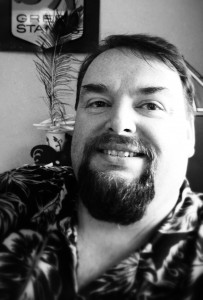When counselors look to build a board of directors and fill key positions in their nonprofit programs, it is imperative to remember that there are many different types of leaders.
Some leaders are great thinkers and developers of new ideas and programs but lack the desire to maintain or reconfigure a program once it has taken root. Others are great maintainers but may lack the skills to start a program from scratch or reconfigure an existing program. Still others are best suited to take an existing but lagging program and make it stronger than they found it originally. All of these leaders can serve a program well so long as the timing is right.
When an existing program finds itself in transition naturally, it may discover that certain invaluable board members are less than fully equipped to handle the transition. As a result, the program, or the board member, may seek to open that board position to new blood. This often leads to angst at some level. It is important to note that we are all replaceable; change in and of itself need not be seen as a negative.
Transitions can bring great change. The loss of key board members may indeed bring about changes that are less than ideal. Perhaps the board member had a particular passion or key connections that made a program stand out. The loss of a particular board member may mean the loss of that program, or at least a great reduction to it. This in and of itself can have an impact, but it can also allow the program to find a new niche or direction that may bring about growth that was previously unforeseen. It may also allow the main program to redirect funds to a new program or at the very least allow for some experimentation.
Years ago, we faced the need to expand our offerings because we had outgrown our space. We looked at locations for a second office that would have allowed us to do many of the same things we had already been doing for years, but we ended up finding an 1860s farm for sale about 4 miles from our original location. This purchase allowed us to greatly increase the services we were already offering and also add new types of services.
While we lost the “homey” feel that was characteristic of our first (now secondary) office, we gained a “homey community” feel as part of our therapeutic farm-based program. Now folks feel cozy even though they are in a building that is nearly 8,000 square feet. This was made possible through the many innovations introduced by new board members and key staff changes. At the time there was a great deal of change and transition, but we viewed these as a natural extension of what we always had.
The second and third generation of a board can make or break a program. When change is massive, such as the case of multiple key members leaving at once, this can lead to full-scale dilution of the organization’s main goals or mission. It can even lead to the possible dissolution of the program as a whole. More often than not, however, the loss of board members comes in small doses, and careful replacements can help secure the future of the program with little interruption. Be sure to do a thorough assessment of the program’s needs before selecting potential candidates. The “ideal” candidate may become less than effective if his or her abilities are not in line with the program’s current and emerging needs.
Everyone can be replaced. Panic can set in for some companies upon announcing the impending loss of a founder. Founding board members choose to leave for many reasons, though perhaps the most common reason is their wish to retire. Good leadership on the part of other key players can reduce any major transitional issues, however. Case in point: Albert Ellis, who developed rational emotive behavior therapy, was removed from the board of directors of the Albert Ellis Institute despite the fact that he founded the institute and it was named after him. In fact, he lived in the building that housed it! Sure, there was some backlash from fans and supporters after he was removed (a New York state Supreme Court judge later reinstated Ellis to the board, saying he had been removed without proper notice). Regardless, since passing away, both Ellis’ institute and his legacy remain intact.
who developed rational emotive behavior therapy, was removed from the board of directors of the Albert Ellis Institute despite the fact that he founded the institute and it was named after him. In fact, he lived in the building that housed it! Sure, there was some backlash from fans and supporters after he was removed (a New York state Supreme Court judge later reinstated Ellis to the board, saying he had been removed without proper notice). Regardless, since passing away, both Ellis’ institute and his legacy remain intact.
Not all losses are real losses. Every nonprofit program will eventually see the loss of key members. Some of these losses will come as an initial shock, but in many instances, these losses can actually lead to new possibilities, especially if the person had been suffering from burnout or otherwise grown lethargic. New blood can lead to new energy, ideas and improved services.
Stay true to your core mission. It is very important to make sure that new members not only are aware of the history, mission, beliefs and ideals of your nonprofit program, but also appreciate and respect them so that the “original recipe” remains intact (even if some changes are needed to grow with the times). The culture of your nonprofit is key, and it is important that potential new board members are aligned with that culture.
Pay attention to demographic shifts and adjust accordingly. New members or not, it is important to look at demographic shifts and adjust your nonprofit programming as needed. Replacing some key members may actually help you to do this because there may come a time when your leadership team lacks some key knowledge or ability to meet an emergent trend. No one wants to be the company that is caught figuratively stockpiling DVD players in an increasingly wireless world.
Periodic mission adjustments are healthy. Staying true to your mission is healthy, but remember to update that mission on occasion. Transition times may be the perfect opportunity to review and tweak as needed. Examples may include adding different types of programs and increasing the scope (or possibly narrowing the scope) of your operation to reflect current needs and successes.
Replacing key members of your nonprofit need not be a time for strife. Do your homework, remember some key points and move forward. After all, worrying about the loss will do nothing to prevent it, so wouldn’t it be better to simply act proactively?
I’m rooting for you.
****

“Doc Warren” Corson III is a counselor, educator, writer and the founder, developer, and clinical and executive director of Community Counseling Centers of Central CT Inc. (www.docwarren.org) and Pillwillop Therapeutic Farm (www.pillwillop.org). Contact him at docwarren@docwarren.org.
****
Opinions expressed and statements made in articles appearing on CT Online should not be assumed to represent the opinions of the editors or policies of the American Counseling Association.
